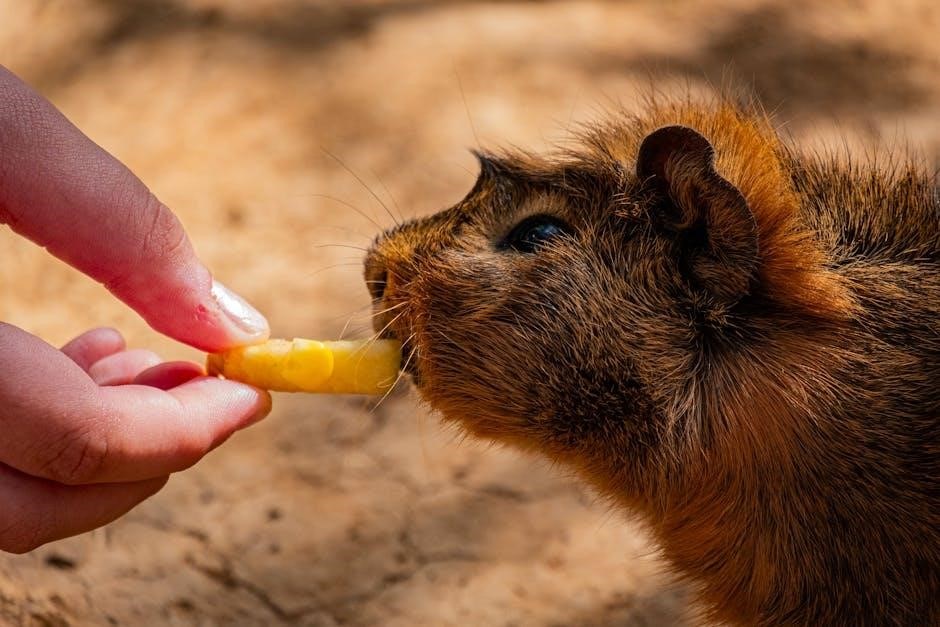
Corn snakes are popular pets, and understanding their feeding needs is essential for their health and growth. This guide provides a comprehensive overview of their feeding requirements.
Overview of Corn Snake Biology and Feeding Needs
Corn snakes (Pantherophis guttatus) are carnivorous reptiles native to the southeastern United States. They are constrictors, feeding on small mammals like mice and rats, which aligns with their natural hunting instincts. Their biology dictates that they require a diet rich in protein to support growth and energy. Feeding needs vary by age and size, with younger snakes requiring more frequent meals and smaller prey items. Understanding their biological makeup and feeding instincts is crucial for providing a balanced and nutritious diet that ensures optimal health and development. Proper feeding practices are essential for maintaining their well-being as pets.
Importance of Proper Feeding for Corn Snake Health
Proper feeding is critical for maintaining the overall health and well-being of corn snakes. A balanced diet ensures optimal growth, energy levels, and immune function. Improper feeding can lead to health issues such as metabolic bone disease, obesity, or malnutrition. Corn snakes require a diet rich in protein from prey items like mice or rats, which supports muscle development and organ function. Regular, appropriately sized meals also promote healthy digestion and prevent feeding-related stress. By meeting their nutritional needs, owners can help their corn snakes thrive and enjoy a long, healthy life as pets. Proper feeding practices are essential for their survival and quality of life.
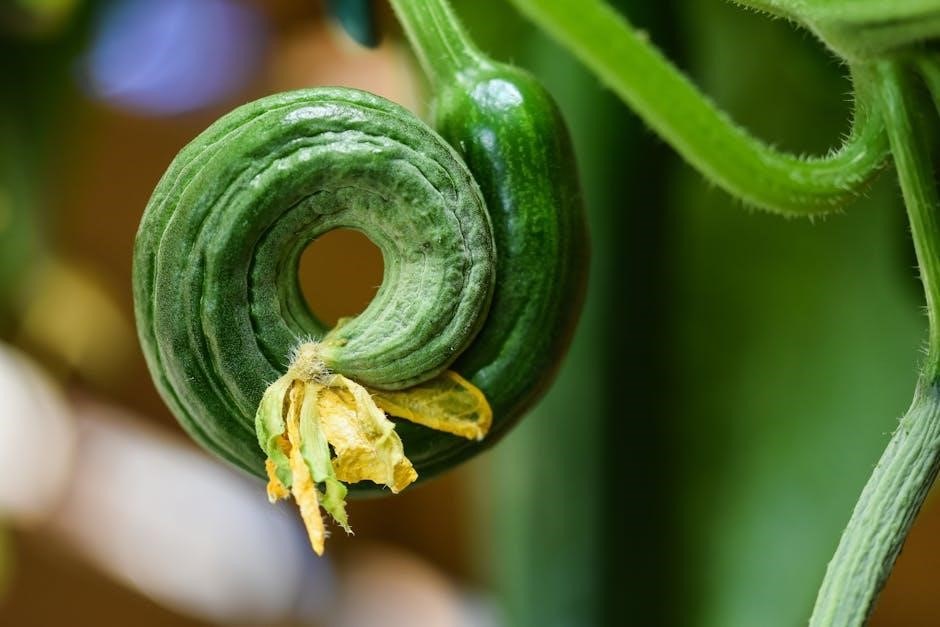
Dietary Requirements for Corn Snakes
Corn snakes are carnivorous, primarily consuming mice and rats. Their diet consists of small mammals, offered live or pre-killed, to meet their nutritional needs effectively.
Carnivorous Diet and Prey Preferences
Corn snakes are obligate carnivores, primarily consuming small mammals like mice and rats. Their diet revolves around live or pre-killed prey, with preferences leaning toward mice for younger snakes and rats as they grow. Prey size is crucial, ensuring it matches the snake’s girth to prevent feeding issues. Live prey mimics natural hunting behavior, while pre-killed options are safer and more convenient. Mice and rats are ideal due to their nutrient balance, meeting the snake’s protein needs. Avoiding wild prey reduces the risk of parasites. This approach ensures a nutritionally complete diet tailored to their carnivorous nature.
Role of Mice and Rats in a Corn Snake’s Diet
Mice and rats are the primary food sources for corn snakes, providing essential nutrients for growth and energy. Hatchlings typically start with pinky mice, while larger snakes transition to fuzzies, hoppers, and eventually rats. These prey items are nutrient-rich and easily digestible, making them ideal for all life stages. Mice are smaller and easier for younger snakes to consume, while rats offer more sustenance for adults. Both options are widely available and minimize the risk of parasites compared to wild prey. This makes mice and rats indispensable staples in a corn snake’s diet, ensuring proper nutrition and development.
Importance of Variety in Prey Items
Providing a variety of prey items is crucial for a corn snake’s balanced diet. While mice and rats are staples, introducing quail eggs, chicks, or rabbits can enhance nutritional diversity. This variety ensures your snake receives a broad spectrum of vitamins and minerals, preventing deficiencies. It also stimulates natural hunting behavior and prevents pickiness. Offering occasional alternative prey, like gerbil or hamster pups, can further enrich their diet. A varied feeding regimen supports optimal health, vitality, and long-term well-being, making it a key component of a comprehensive corn snake feeding strategy.

Feeding Frequency for Corn Snakes
Feeding frequency for corn snakes varies with age and size. Hatchlings eat every 5-7 days, juveniles every 7-10 days, and adults less frequently, typically every 10-14 days.
Hatchling Feeding Schedule (8-20 Inches)
Hatchling corn snakes (8-20 inches) require frequent feeding to support rapid growth. They should be fed every 5-7 days, starting with small prey like pinky mice. The prey size should match the snake’s head width for easy consumption. As they grow, gradually increase prey size to fuzzy mice or small hopper mice. A varied diet helps ensure nutritional balance. Feed in the evening to mimic natural hunting behavior. Monitor growth and adjust the feeding schedule accordingly. Proper feeding during this stage is crucial for healthy development and establishing good eating habits. Consistency and observation are key to raising thriving hatchlings.
Juvenile Feeding Schedule (20-45 Inches)
Juvenile corn snakes (20-45 inches) should be fed every 7-10 days, as their growth rate slows slightly compared to hatchlings. Prey size should progress from fuzzy mice to hopper mice and eventually small adult mice. The prey should still match the snake’s head width for easy consumption. Feeding in the evening mimics their natural hunting behavior. Monitor the snake’s weight and adjust the feeding schedule if necessary. Consistent feeding helps maintain steady growth and energy levels. Avoid overfeeding to prevent obesity. Juveniles typically eat more frequently than adults but less often than hatchlings. Adjust prey size gradually as the snake grows.
Subadult and Adult Feeding Schedule (35+ Inches)
Subadult and adult corn snakes (35+ inches) typically require feeding every 10-14 days, as their metabolism slows compared to younger snakes. Adults eat larger prey like adult mice or rats, matching their head width. Feeding frequency may vary based on age, size, and activity level. Larger snakes can go longer between meals, while more active individuals may need more frequent feeding. Monitor the snake’s weight and adjust the schedule to prevent overfeeding. Adult females may eat more frequently during breeding season, while males tend to eat less. Consistency is key to maintaining a healthy, thriving adult corn snake.
Feeding Frequency Based on Age and Size
Feeding frequency for corn snakes varies significantly based on their age and size. Hatchlings (8-20 inches) typically eat every 5-7 days, while juveniles (20-45 inches) are fed every 7-10 days. Subadults and adults (35+ inches) usually require feeding every 10-14 days. Larger snakes naturally eat less frequently due to slower metabolism. The feeding schedule should align with the snake’s growth rate and prey size. Adjustments may be needed based on individual activity levels and weight management. Proper timing ensures optimal health and prevents overfeeding or underfeeding. Consistency in feeding frequency is crucial for maintaining a thriving corn snake.
Prey Size and Selection Guide
Choosing the right prey size is crucial for corn snakes. Start with small prey like pinky mice for hatchlings and gradually increase as the snake grows.
Choosing the Right Prey Size for Your Corn Snake
Selecting the appropriate prey size is vital for your corn snake’s health and digestion. Hatchlings typically start with small prey like pinky mice, while juveniles and adults require larger prey. The prey should be approximately 1.5 times the diameter of the snake’s head to ensure easy consumption. Undersized prey may not provide adequate nutrition, while oversized prey can cause digestive issues. Gradually increase prey size as your corn snake grows, ensuring a balanced diet. Proper prey sizing supports healthy growth and prevents potential feeding problems. Always monitor your snake’s size and adjust prey accordingly for optimal health;
Gradually Increasing Prey Size as Your Snake Grows
As your corn snake grows, it’s crucial to gradually increase prey size to meet their nutritional needs. Hatchlings begin with pinky mice, progressing to larger prey like fuzzies and hopper mice as they grow. Juveniles typically transition to adult mice or small rats, while adults may require larger rats depending on their size. Always match prey size to the snake’s girth to prevent digestive issues. A general rule is to increase prey size when the snake’s head or body outgrows the current prey. This ensures proper growth and prevents feeding problems. Monitor your snake’s growth closely and adjust prey size accordingly.
Feeding Charts for Different Life Stages
Feeding charts are essential for ensuring your corn snake receives the right prey size and frequency at each life stage. Hatchlings (8-20 inches) are fed every 5-7 days, starting with pinky mice. Juveniles (20-45 inches) eat every 7-10 days, progressing to fuzzies or small mice. Subadults (35-50 inches) are fed every 10-12 days, transitioning to adult mice or small rats. Adults (over 50 inches) typically eat every 10-14 days, with larger prey items like medium rats. These charts help maintain proper growth, digestion, and overall health throughout your corn snake’s life. Always adjust based on individual needs and growth patterns.
Feeding Techniques and Best Practices
Proper feeding techniques, such as using tongs to present prey, ensure safety and stimulate natural hunting behavior. Always feed in the evening to mimic their nocturnal nature.
Handling and Presenting Prey to Your Corn Snake
When feeding, use feeding tongs to handle prey, ensuring a safe and stress-free experience for both you and your snake. Gently present the prey near your corn snake, mimicking natural hunting behavior. Avoid handling your snake for at least 24 hours before feeding to prevent stress. Pre-killed prey should be warmed to body temperature and moved enticingly to stimulate your snake’s feeding response. Never force-feed; allow your corn snake to strike and consume prey at its own pace. Proper presentation encourages a natural feeding process and reduces the risk of feeding refusal.
Using Feeding Tongs for Safe and Effective Feeding
Feeding tongs are an essential tool for safely offering prey to your corn snake, reducing the risk of bites and stress. They allow you to securely hold and move prey, encouraging your snake to strike naturally. When using tongs, gently grasp the prey by the midsection or tail, avoiding excessive force. Warm the prey to body temperature before presenting it, and move it slowly and smoothly to mimic live movement. This method ensures a stress-free feeding experience for your corn snake and helps prevent feeding refusal. Choose tongs with a secure grip to prevent prey from escaping during feeding.
Feeding in the Evening or Night for Natural Behavior
Feeding your corn snake in the evening or at night aligns with their natural hunting instincts, as they are nocturnal creatures. Presenting prey during this time encourages active hunting behavior and stimulates a stronger feeding response. Use feeding tongs to gently move the prey, mimicking the movement of live prey. Ensure the prey is warmed to body temperature for optimal appeal. Feeding in the evening also helps maintain a natural circadian rhythm, promoting healthy digestion and reducing stress. Observing your snake during these sessions can provide insights into their feeding preferences and overall health. Consistency in timing will help establish a reliable feeding routine.

Feeding Challenges and Solutions
Feeding challenges like refusal or pickiness can arise, but understanding triggers and adjusting techniques helps ensure your corn snake thrives. Patience and consistency are key.
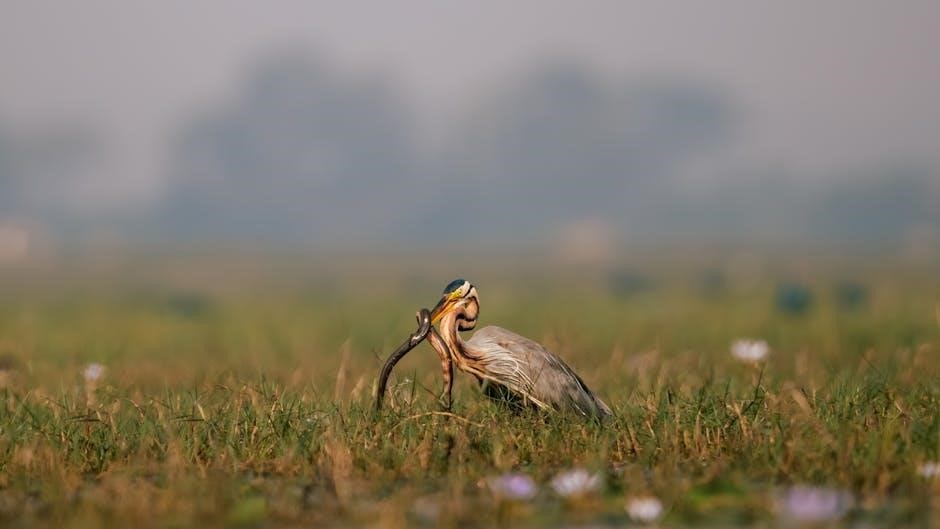
Addressing Feeding Refusal in Corn Snakes
Feeding refusal in corn snakes can occur due to stress, environmental changes, or health issues. Ensure proper temperature, humidity, and hiding places to reduce stress. Offer prey in the evening, as corn snakes are naturally nocturnal hunters. Using feeding tongs or fresh, high-quality prey can stimulate appetite. Avoid forcing food, as this may cause injury. If refusal persists, consult a veterinarian to rule out underlying health problems. Patience and consistency are key to resolving feeding issues and encouraging normal feeding behavior in your corn snake.
Troubleshooting Feeding Issues in Hatchlings
Hatchling corn snakes may experience feeding challenges due to their small size and delicate nature. Refusal to eat can stem from stress, improper prey size, or inadequate environmental conditions. Ensure prey items, such as pinky mice, are appropriately sized for their mouth and digestive system. Offer live prey to stimulate natural hunting behavior, as hatchlings may not recognize pre-killed food. Maintain proper temperature and humidity levels, and provide hiding places to reduce stress. If feeding issues persist, consult a reptile-savvy veterinarian to rule out health concerns. Consistency and patience are crucial during this sensitive stage.
Dealing with Prey Aversion and Picky Eaters
Prey aversion in corn snakes can occur if they develop a preference for specific prey types or refuse to eat altogether. To address this, offer live prey, as movement often stimulates their natural hunting instinct. For persistent pickiness, try varying prey items, such as switching between mice and rats, to keep meals interesting. Ensure the prey is appropriately sized and warmed to blood temperature. Avoid over-handling, as stress can worsen aversion. If issues persist, consult a veterinarian to rule out underlying health problems. Patience and consistent offering of food can help your snake overcome picky eating habits over time.
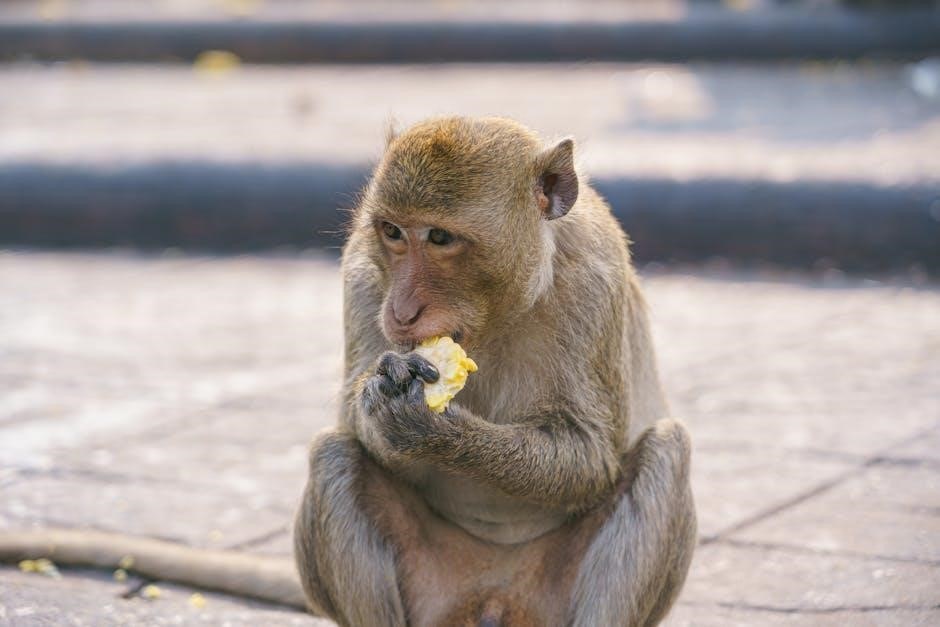
Supplements and Gutloading
Supplements like calcium and vitamin D3 are crucial for bone health and digestion. Gutloading prey ensures they are nutrient-rich, benefiting your snake’s overall well-being and growth patterns.
Role of Calcium and Vitamin D3 in Feeding
Calcium and vitamin D3 are essential for a corn snake’s bone health and proper nutrient absorption. Calcium supports strong bone development and growth, while vitamin D3 ensures calcium is effectively absorbed. Deficiencies can lead to metabolic bone disease, a serious health issue. These supplements are often added to prey items through dusting or gutloading. A balanced ratio of calcium to vitamin D3 is crucial to avoid over-supplementation, which can also harm your snake. Always research or consult a veterinarian to determine the best supplementation schedule for your corn snake’s specific needs and life stage.
Gutloading Prey for Maximum Nutritional Benefit
Gutloading prey is a vital step in maximizing the nutritional benefit for your corn snake. This process involves feeding high-calcium or nutrient-rich foods to mice or rats 24-48 hours before offering them to your snake. It ensures the prey is as nutritious as possible, especially for hatchlings and juvenile snakes. Using live prey that is active and healthy after gutloading helps prevent digestive issues. While frozen-thawed prey cannot be gutloaded, selecting high-quality options ensures your corn snake receives essential nutrients for optimal health and growth.
When and How to Use Supplements in Feeding
Supplements like calcium and multivitamins are essential for ensuring your corn snake gets all necessary nutrients. They are particularly important for hatchlings and juveniles, as they support bone development and overall growth. Dust prey items lightly with calcium powder, especially during shedding or growth phases, and use multivitamins once a month. Avoid over-supplementation, as it can harm your snake’s health. Always follow the product instructions and consult a veterinarian if unsure. Proper use of supplements enhances your corn snake’s diet and promotes long-term health.
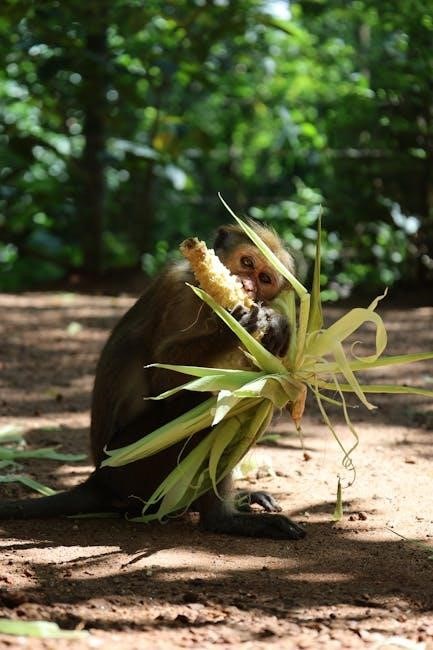
Feeding Live vs. Pre-Killed Prey
Feeding live prey carries risks of injury to the snake, while pre-killed options are safer and more convenient. Many owners prefer pre-killed for ease and snake safety.
Pros and Cons of Live Prey Feeding
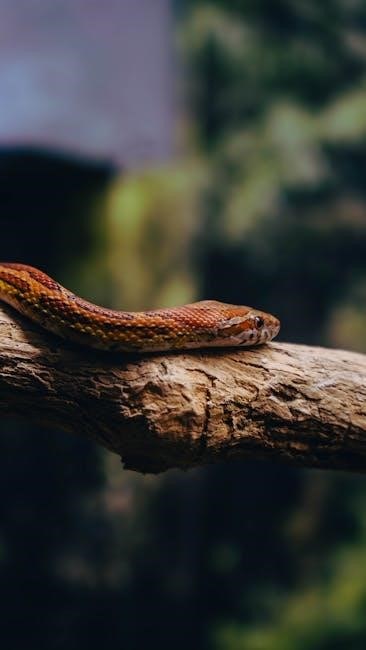
Feeding live prey mimics natural hunting behavior, providing mental stimulation and exercise for corn snakes. It can be beneficial for snakes with high energy levels or picky eaters. However, live prey poses risks, as small animals may bite or injure the snake. Monitoring is essential to prevent harm. Additionally, handling live prey can be stressful for both the snake and the owner. Pre-killed options are often safer and more convenient, making live feeding less popular among many keepers despite its natural benefits.
Benefits of Feeding Pre-Killed or Frozen-Thawed Prey
Feeding pre-killed or frozen-thawed prey offers numerous advantages for corn snake owners. It eliminates the risk of live prey injuring the snake, reducing stress and potential harm. Pre-killed options are also more convenient, as they can be stored and thawed as needed. This method ensures consistency in feeding and reduces the snake’s need to hunt, which can be energetically taxing. Additionally, pre-killed prey is often gutloaded with nutrients, providing a balanced diet. Many snakes thrive on this feeding method, making it a popular choice for promoting healthy growth and calm behavior.
Best Practices for Thawing and Offering Pre-Killed Prey
Thaw pre-killed prey in the refrigerator or cold water to prevent bacterial growth. Once thawed, warm the prey to room temperature before offering. Use feeding tongs to gently present the prey, stimulating the snake’s natural hunting instinct. Avoid microwaving, as it can create uneven heat spots. Monitor the snake’s behavior during feeding to ensure a smooth process. Always wash hands before and after handling prey to maintain hygiene. Proper thawing and presentation ensure a safe, nutritious meal for your corn snake, promoting healthy digestion and overall well-being.
Feeding During Special Life Stages
Adjust feeding strategies during shedding, breeding, or brumation. Feed after shedding completes, increase frequency for breeding snakes, and pause feeding during brumation to support natural behaviors and health.
Feeding Corn Snakes During Shedding
Feeding should be paused during shedding cycles, as snakes’ metabolism slows, and eating can cause stress. Resume feeding 24-48 hours after shedding, ensuring prey is appropriately sized and warmed. This practice prevents complications and supports healthy skin renewal. Proper hydration and a stress-free environment are crucial during this period to aid the shedding process and overall well-being.
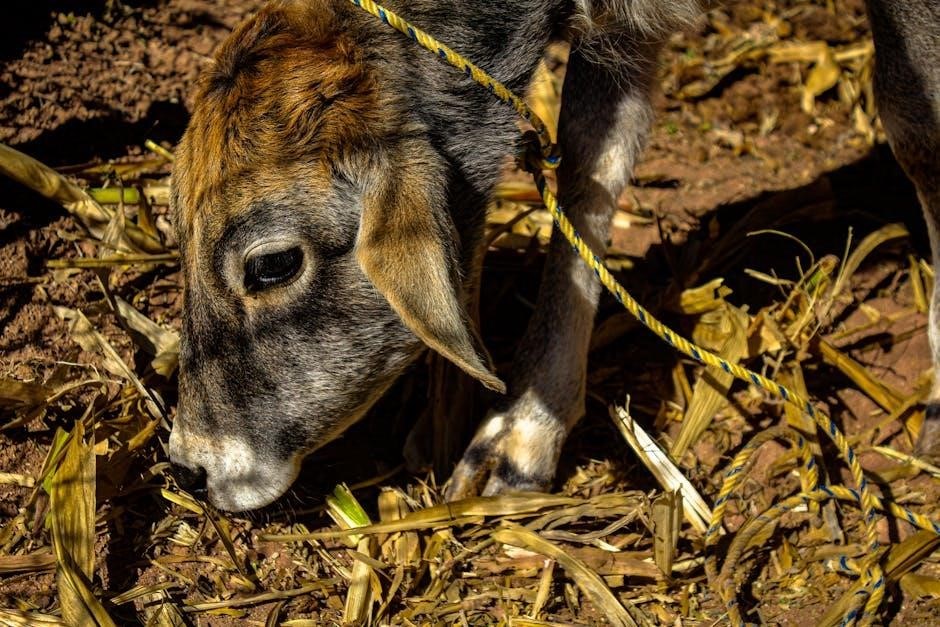
Feeding Pregnant or Breeding Corn Snakes
Feeding pregnant or breeding corn snakes requires careful attention to their nutritional needs. Increase feeding frequency slightly, offering prey items of appropriate size to support energy demands. Ensure a calcium-rich diet, as breeding and egg production strain calcium reserves. Monitor weight and overall health, adjusting prey size and frequency as needed. Avoid overfeeding, as this can lead to complications. Provide fresh water and a stress-free environment. Consult a veterinarian if concerns arise, as proper nutrition is critical for successful reproduction and the snake’s well-being. Maintain a consistent feeding schedule to support both the snake and its developing offspring.
Feeding Corn Snakes During Brumation
During brumation, corn snakes typically stop eating due to reduced metabolic activity. It is not recommended to feed your snake during this period, as their digestive system slows down significantly. Forcing food can lead to health issues like regurgitation or impaction. Allow your snake to rest naturally, ensuring access to fresh water. Brumation usually lasts 2-4 months, after which feeding can gradually resume with smaller prey items to ease digestion. Monitor your snake’s condition and consult a veterinarian if brumation persists unusually long or if health concerns arise. Respect their natural cycle for optimal well-being.
Monitoring and Adjusting Feeding Strategies
Monitor your corn snake’s weight, growth, and feeding behavior to ensure a balanced diet. Adjust feeding schedules based on activity levels and seasonal changes to optimize health and digestion.

Observing Feeding Behavior for Health Indicators
Observing your corn snake’s feeding behavior is crucial for ensuring its health. A healthy snake typically shows enthusiasm during feeding, striking and constricting prey effectively. Signs of poor health may include refusal to eat, lethargy, or regurgitation. Monitoring feeding behavior helps identify potential issues early, such as digestive problems or stress. If your snake hesitates or shows disinterest in prey, it may indicate underlying health concerns. Regular observation allows you to adjust feeding strategies and seek veterinary care if necessary, ensuring your corn snake remains thriving and active.
Adjusting Feeding Frequency Based on Growth and Activity
As corn snakes grow and mature, their feeding frequency must be adjusted to match their energy needs. Hatchlings require more frequent meals to support rapid growth, while adults need less frequent feeding to maintain a healthy weight. Active snakes, especially those in breeding season, may need more food to sustain their energy levels. Monitoring growth and activity helps determine the optimal feeding schedule, ensuring your snake stays healthy without overfeeding. Adjustments should be gradual, tailored to individual needs, and guided by observable changes in size and behavior.
Recognizing Signs of Overfeeding or Underfeeding
Monitoring your corn snake’s feeding is crucial to prevent health issues. Overfeeding can lead to obesity and related health problems, while underfeeding may cause stunted growth and lethargy. Signs of overfeeding include visible fat deposits, bulges, or unnatural curves in the snake’s body. Underfeeding is marked by visible ribs, sunken eyes, or lack of weight gain. Adjustments should be made based on these observations to ensure a balanced diet. Regular weighing and visual inspections can help identify potential issues early. If concerns persist, consult a veterinarian for professional guidance.
Key Takeaways for Successful Corn Snake Feeding
Proper feeding practices are vital for your corn snake’s health and longevity. Stick to a balanced diet, monitor growth, and adjust feeding schedules as needed. Always prioritize your snake’s well-being by staying informed and observant. Happy herping!
Proper feeding is crucial for your corn snake’s health and growth. Feed hatchlings every 5-7 days, juveniles every 7-10 days, and adults every 10-14 days. Always match prey size to your snake’s head width. Offer a varied diet of mice and rats, and consider supplements like calcium and vitamin D3. Monitor feeding behavior and adjust schedules based on growth and activity levels. Avoid overfeeding to prevent obesity. Finally, stay informed and consult reputable sources or veterinarians for tailored advice. Consistency and observation are key to raising a thriving corn snake.
Encouragement for Further Research and Community Engagement
Exploring beyond this guide is key to mastering corn snake care. Join online forums, reptile communities, and social media groups to share experiences and learn from seasoned breeders. Attend reptile shows and workshops to gain hands-on insights. Stay updated with scientific research and breeder recommendations to refine your feeding strategies. Engaging with the corn snake community fosters a deeper understanding and helps address unique challenges. Remember, every snake is different, and continuous learning ensures the best care for your pet. Happy herping, and enjoy the rewarding journey of corn snake ownership!